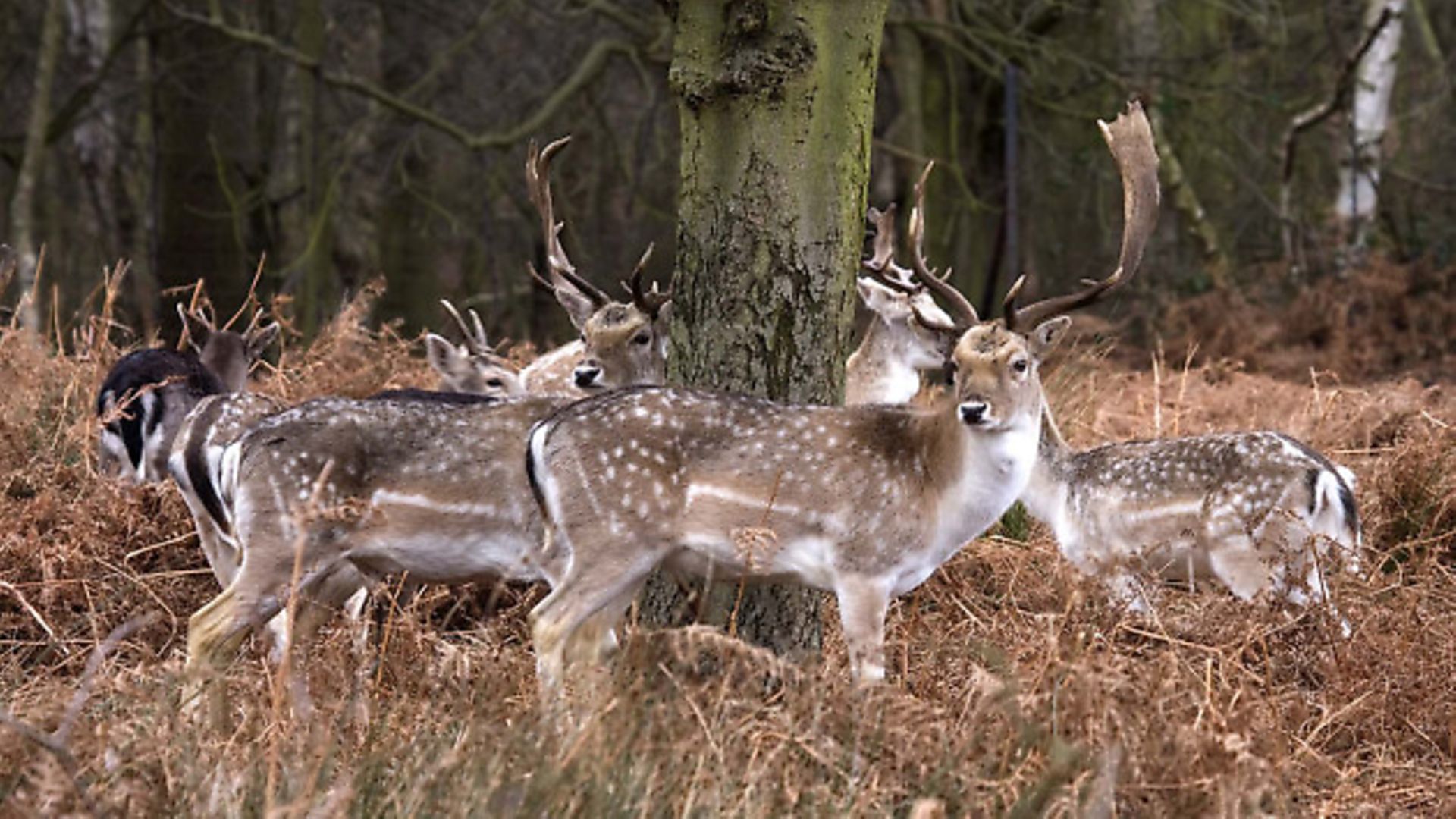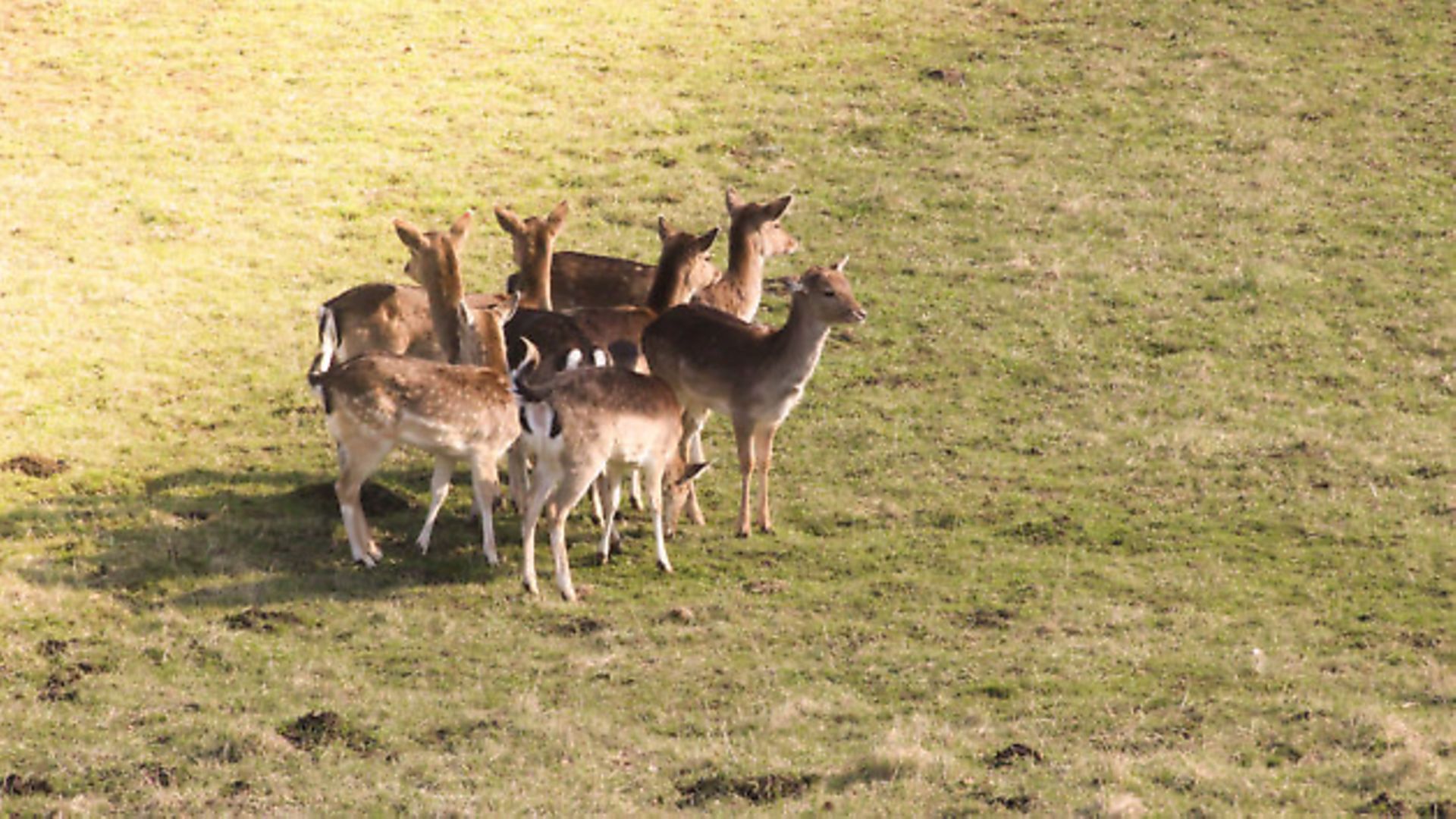Everything you need to know about fallow deer, including habitat, appearance, antler formation, behaviour, breeding/reproduction, and the legal shooting seasons
 credit: Archant
credit: Archant
Species history, population and distribution
Fallow deer have an interesting and chequered history. There are records of them being present in Britain some 400,000 years ago, but glaciations (the process of the land being covered by glaciers and ice sheets) later restricted them to the Mediterranean basin. Over 300,000 years later, fallow were reintroduced from western Mediterranean countries by the Romans, and kept in enclosures called ‘vivaria’. Genetic analysis has shown that this population of fallow became extinct in Great Britain following the collapse of the Roman Empire, and it wasn’t until the 11th century, after the Norman Conquest, that fallow deer were reintroduced once again, this time from the eastern Mediterranean. They were kept in deer parks, initially for ornament but later as a source of venison for the aristocratic dinner table, and were also maintained in the wild in some areas for hunting, such as the New Forest and Epping Forest. A combination of deer parks declining in fashion, the 1642 Civil War, and the two World Wars meant that the parks gradually fell into disrepair, despite sporadic resurgences in popularity. Our current population of wild fallow deer are descendants of feral park escapee herds.
The fallow population has increased steadily in the UK since the 1970s. Various studies estimate the population at around 100,000 but, like all deer species, exact numbers are difficult to attain.
Distribution maps show them to be widespread and abundant throughout England and Wales and present in Northern Ireland, with a less abundant population in Scotland where small, high-density ‘pockets’ of fallow can be seen. Today, the conservation status for fallow is ‘of the least concern’.
Appearance, antler formation and behaviour
Fallow deer are of medium size in relation to the other UK species, residing somewhere between roe and red deer. Fallow bucks stand approximately 84-94cm at the shoulder and weigh around 46-94kg. Does are slightly smaller, measuring 73-91cm and weighing 35-56kg. There are four main variations in coat colour: the familiar or ‘common’ tan/fawn colouring, featuring white spots and a white rump patch bordered in black, with the coat becoming grey and the spots indistinct in winter; the ‘menil’ variety is paler in colour, keeps its white spots all year round, and lacks the black bordering on the rump patch; the ‘melanistic’ variety is almost entirely black with no white colouration; and the ‘leucistic’ variety is pure white, and a true coat variation rather than an albinistic anomaly, as some assume. They have long tails and, when not in antler, sex is most easily distinguished by the penile ‘brush’ on the males.
Fallow deer are the only UK species with palmate antlers – ‘palmate’ means shaped like an open palm, or like a hand with the fingers extended. The pedicles from which the antlers grow are not visible on young bucks until after their first winter, with the first set of antlers growing into simple, unbranched spikes 1-20cm long. Two spikes are generally grown the following year, with the beginning of the flat palmate area sometimes beginning to show between the branching. They will not fully palmate until the deer are four years old. Antlers are cast or shed in late April or May, with regrowth occurring during the spring and summer; similarly to other species, they are grown with a velvet covering which is rubbed off on trees, etc. once the antlers are fully formed. With the obvious limitations of age and diet, fallow antlers can reach up to 70cm in length with 20 plus points, and are prized for their impressive appearance.
Fallows are herding deer and prefer diverse woodland habitats close to arable or pasture land. The size of their herds depends on the habitat quality, the population density in the area, the time of year and the level of disturbance; for example, a particularly large herd may be the result of continual disturbance and a high density of deer. The sexes generally remain segregated, but again this can be dependent on habitat, and some areas may see mixed herds. Buck herds generally have a hierarchy based on age, size and aggression, while the does will be led by an older, more dominant individual. Herds can remain fairly static yet often have favoured key areas, with very clear boundaries, which they will move between in an irregular manner. This can make it very difficult to locate a herd, and the clear-cut boundaries mean fallow can be present in one area in abundance, yet entirely absent from another area just a mile or so away. They favour grassy grazing areas and can be seen feeding in the day if the herd is undisturbed; however, if experiencing frequent disturbance, herds will often limit their use of open space to night. In the key areas there will often be daily movement, from more open feeding areas to lying up areas in denser cover, but again this is affected by disturbance and other variables.
 credit: Archant
credit: Archant
Like other species of deer, fallows exist on a varied diet that is dependent on the seasons and availability of food sources. Their diet includes shrubs, leaves, buds and bark. They are, however, primarily grazers, explaining why they favour areas of woodland that are close to arable and pasture land.
The rut and reproduction
The fallow rut begins in late September and peaks in mid October, with the does giving birth, usually to a single fawn, between late May and mid June. Embryo development begins immediately with a gestation period of 229 days.
The fawns are generally weaned by October and most does will cease to lactate by December, but those with fawns born later in the year may continue into February. The females are polyoestrous, which means they will come into season repeatedly if they do not conceive immediately, resulting in occasional births as late as September and an adult doe pregnancy rate of 90% or higher.
In high-density populations, bucks will congregate to rut in areas to attract the does and herd them into a harem; these areas are known as ‘leks’. In lower densities, they may simply seek out receptive females. Similarly to the other deer species, fallow bucks will display certain behaviours during the rut such as groaning, scraping the ground, and fighting with other bucks to establish territories. During the rut they tend not to feed, and it can be hard for them to recover in time for winter. Bucks that do not manage to mate or establish a territory will remain on the fringes until the rut is over and they can re-establish their herd.
OPEN SEASON FOR FALLOW
Buck: England and Wales August 1 – Aprril 30. Scotland August 1 – Aprril 30. Northern Ireland August 1 – April 30
Doe: England and Wales November 1 – March 31. Scotland October 21 – February 15. Northern Ireland November 1 – March 31
Discover more about Sako 6, an exclusive club for stakers, by visiting the website